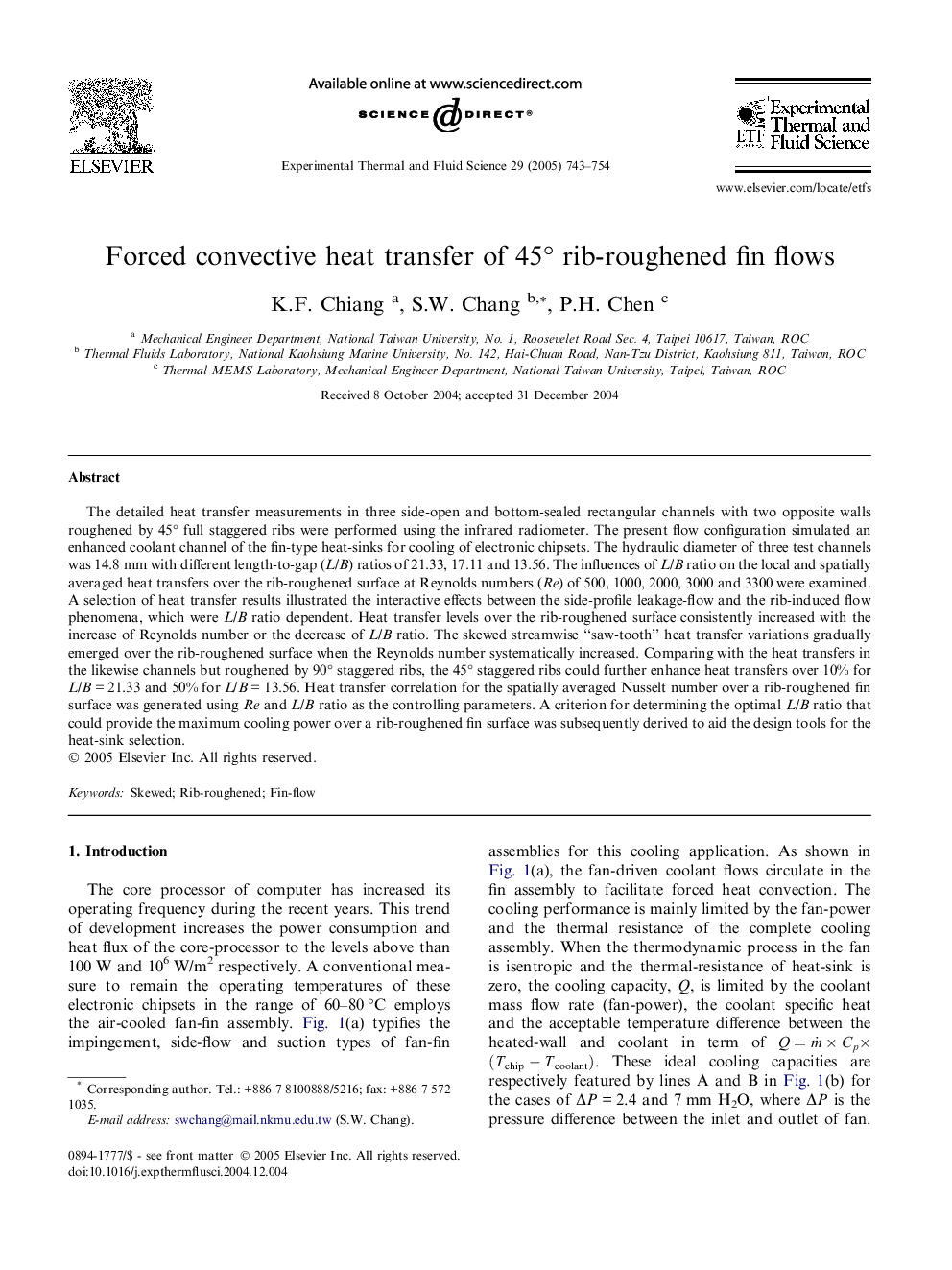| Article ID | Journal | Published Year | Pages | File Type |
|---|---|---|---|---|
| 10391965 | Experimental Thermal and Fluid Science | 2005 | 12 Pages |
Abstract
The detailed heat transfer measurements in three side-open and bottom-sealed rectangular channels with two opposite walls roughened by 45° full staggered ribs were performed using the infrared radiometer. The present flow configuration simulated an enhanced coolant channel of the fin-type heat-sinks for cooling of electronic chipsets. The hydraulic diameter of three test channels was 14.8 mm with different length-to-gap (L/B) ratios of 21.33, 17.11 and 13.56. The influences of L/B ratio on the local and spatially averaged heat transfers over the rib-roughened surface at Reynolds numbers (Re) of 500, 1000, 2000, 3000 and 3300 were examined. A selection of heat transfer results illustrated the interactive effects between the side-profile leakage-flow and the rib-induced flow phenomena, which were L/B ratio dependent. Heat transfer levels over the rib-roughened surface consistently increased with the increase of Reynolds number or the decrease of L/B ratio. The skewed streamwise “saw-tooth” heat transfer variations gradually emerged over the rib-roughened surface when the Reynolds number systematically increased. Comparing with the heat transfers in the likewise channels but roughened by 90° staggered ribs, the 45° staggered ribs could further enhance heat transfers over 10% for L/B = 21.33 and 50% for L/B = 13.56. Heat transfer correlation for the spatially averaged Nusselt number over a rib-roughened fin surface was generated using Re and L/B ratio as the controlling parameters. A criterion for determining the optimal L/B ratio that could provide the maximum cooling power over a rib-roughened fin surface was subsequently derived to aid the design tools for the heat-sink selection.
Keywords
Related Topics
Physical Sciences and Engineering
Chemical Engineering
Fluid Flow and Transfer Processes
Authors
K.F. Chiang, S.W. Chang, P.H. Chen,
